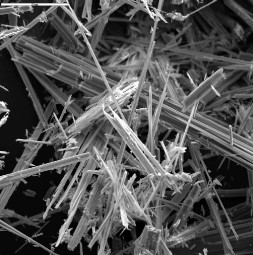Abrasive tools are indispensable in construction, used for a variety of tasks from cutting and grinding to polishing and finishing. These tools, which include grinders, sanders, and cutting discs, help shape, smooth, and prepare materials, making them vital for achieving precision and quality in construction projects. However, like all powerful tools, they come with risks that must be managed through proper use and safety practices.
Types of Abrasive Tools
Angle Grinders:
- Overview: Angle grinders are versatile hand-held tools used for cutting, grinding, and polishing. They can be fitted with various discs designed for specific tasks, such as cutting metal, grinding concrete, or polishing stone.
- Applications: Cutting rebar, tiles, and concrete; removing rust or old paint; polishing metal surfaces.
Bench Grinders:
- Overview: Bench grinders are stationary machines used for sharpening tools, shaping metal, and smoothing rough edges. They typically have two grinding wheels with different grit levels for coarse and fine grinding.
- Applications: Sharpening chisels and drill bits; shaping metal; removing burrs from metal surfaces.
Belt Sanders:
- Overview: Belt sanders use a continuous loop of sandpaper to smooth and finish wood, metal, and other materials. They are particularly effective for large, flat surfaces.
- Applications: Smoothing wooden floors, doors, and furniture; removing paint or varnish; finishing metal surfaces.
Best Practices for Using Abrasive Tools
Choose the Right Tool for the Job:
- Select the appropriate abrasive tool and disc for the material and task at hand. Using the wrong tool can result in poor performance, damage to the material, or even injury.
Inspect Tools and Accessories:
- Before use, inspect abrasive tools and accessories for damage, wear, or defects. Replace worn or damaged discs and ensure all components are securely attached.
Wear Appropriate Personal Protective Equipment (PPE):
- Always wear PPE, including safety glasses, gloves, hearing protection, and a dust mask or respirator. Abrasive tools generate dust, debris, and noise, which can be hazardous without proper protection.
Maintain a Firm Grip:
- Hold the tool firmly with both hands and maintain a stable stance to control the tool and reduce the risk of accidents. Ensure that the workpiece is securely clamped or supported.
Operate at the Correct Speed:
- Follow the manufacturer’s recommendations for operating speed. Using a tool at too high or too low a speed can lead to inefficient cutting, excessive wear, or even tool failure.
Keep the Work Area Clean:
- Maintain a clean and organized work area. Remove debris and obstructions that could cause tripping or interfere with the operation of abrasive tools.
Regular Maintenance:
- Perform regular maintenance on abrasive tools, including cleaning, lubricating, and replacing worn parts. Well-maintained tools are safer and more effective.
Safety Considerations
Abrasive tools, while highly effective, can be dangerous if not used correctly. Here are some key safety considerations:
- Kickback: Kickback occurs when the tool suddenly jerks backwards, often due to binding or pinching of the cutting disc. To prevent kickback, use tools at the correct angle, apply consistent pressure, and avoid forcing the tool through the material.
- Disc Explosions: Discs can shatter if they are damaged, overloaded, or used incorrectly. Always use discs rated for the tool’s speed, avoid side-loading discs, and never use damaged or expired discs.
- Dust Inhalation: Abrasive tools generate fine dust particles that can be harmful if inhaled. Use dust extraction systems where possible, and always wear a suitable dust mask or respirator.
- Eye Injuries: Flying debris is a common hazard when using abrasive tools. Always wear safety glasses or a face shield to protect your eyes from particles and sparks.
Abrasive tools are essential for many construction tasks, offering precision and efficiency in cutting, grinding, and finishing materials. However, their power and speed come with inherent risks. By choosing the right tool for the job, following best practices, and prioritizing safety, construction professionals can maximize the benefits of abrasive tools while minimizing the risks. Whether you’re cutting through concrete or polishing metal, a thoughtful approach to the use of tools ensures that the job gets done safely and effectively.
If you, or anyone you know needs training, please refer to our training page at phoenixoshatraining.com/services/ .
Published by OSHA Phoenix on August 20, 2024


